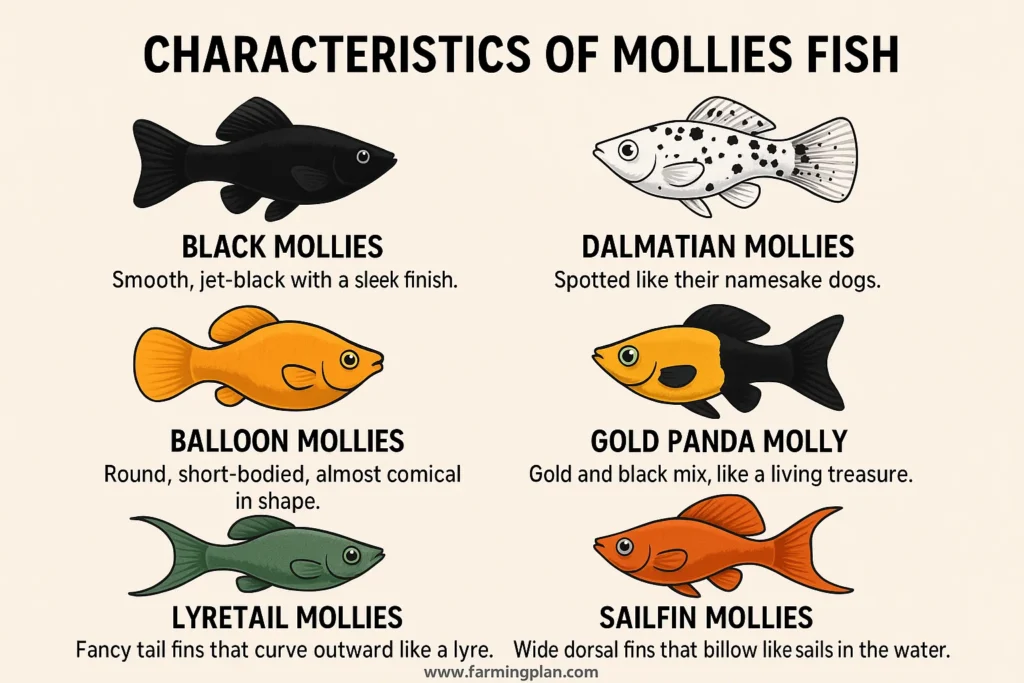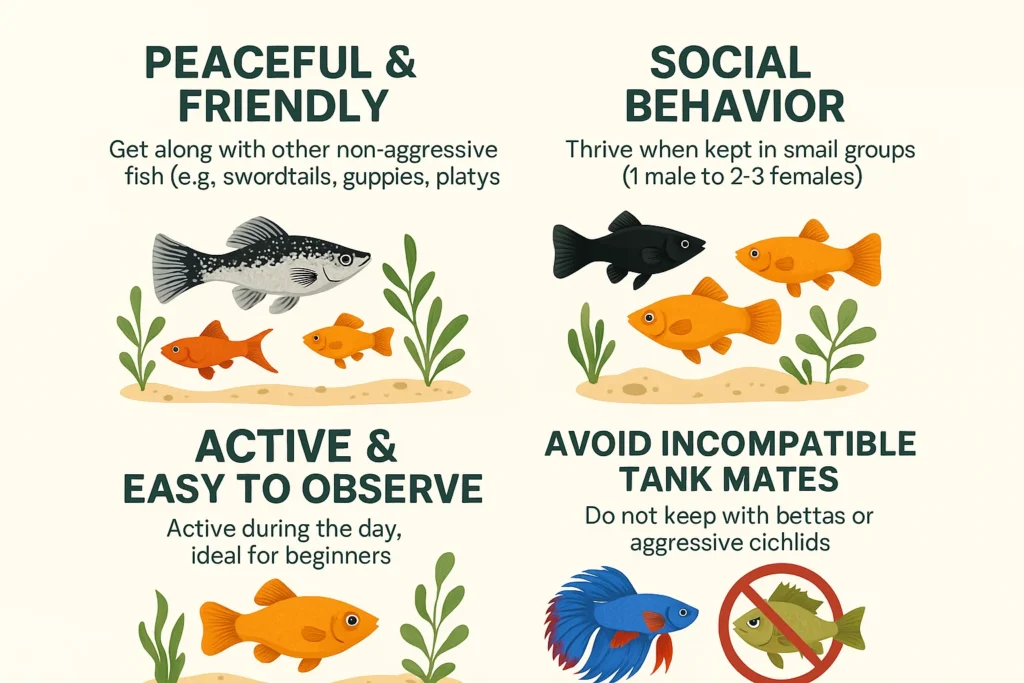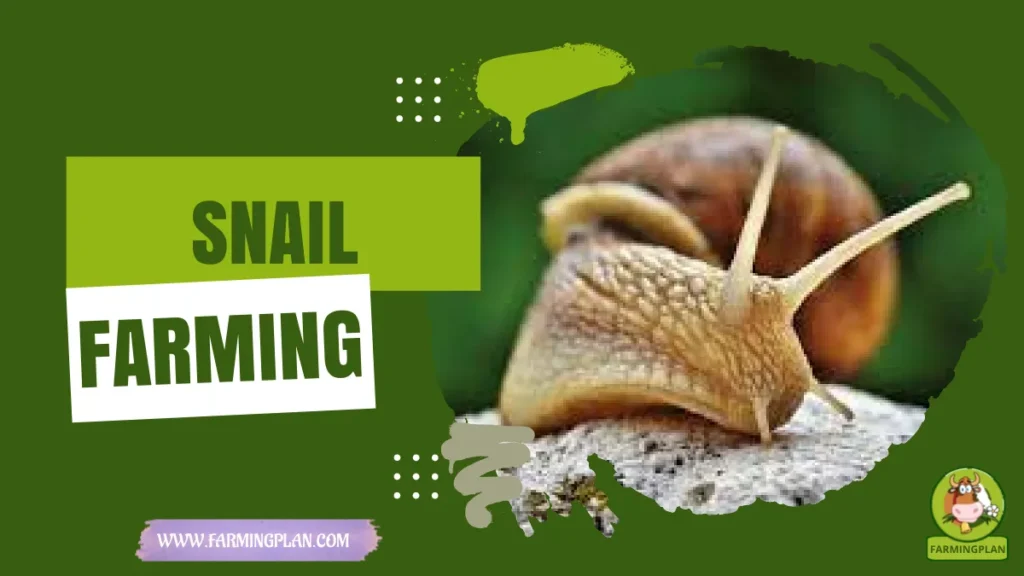If you’ve ever admired the graceful swim of colorful fish in a tank, chances are you’ve seen a molly. Mollies are among the most popular aquarium pets—and it’s easy to see why! They’re peaceful, easy to care for, and come in a wide range of shapes and stunning colors. From sleek black mollies to plump balloon mollies, spotted dalmatians to golden pandas, there’s a molly to match every style and tank setup. In this quick guide, I’ll share everything I’ve learned from keeping and breeding mollies—from simple care tips to fun facts that make them such charming little fish.

History & Origin of Mollies Fish
Mollies fish originally come from warm, shallow waters of Central and South America. You’ll find them naturally swimming through fresh and brackish waters in Mexico, Colombia, and Venezuela. The two most common wild species that started it all are Poecilia sphenops (short-fin molly) and Poecilia velifera (sailfin molly). Over time, breeders mixed and matched these species, creating what we now know as the modern molly varieties you see in pet stores around the world.

What makes mollies even more fascinating is that they’re considered part of a species complex. That means there are many overlapping types with small differences in shape, size, and finnage. They’ve been bred for decades not only for beauty but also for resilience—making them a favorite in aquarium literature and among aquarists like myself.
Read More: Discus Fish: The Most Beautiful of All Freshwater Species
Characteristics of Mollies Fish
Mollies fish are famous for their vast range of colors and body styles. Whether it’s the velvety black mollies, the marbled dalmatian mollies, or the soft golden-yellow of the 24-carat gold molly, each type has a charm of its own.

Mollies generally grow up to 3–4 inches long, with females typically larger than males. Their body shape can vary widely—from the plump balloon molly to the elongated sailfin molly with its grand dorsal fin. Some varieties include:
- Black Mollies: Smooth, jet-black with a sleek finish.
- Dalmatian Mollies: Spotted like their namesake dogs, usually black and white.
- Balloon Mollies: Round, short-bodied, almost comical in shape.
- Gold Panda Molly: Gold and black mix, like a living treasure.
- Lyretail Mollies: Fancy tail fins that curve outward like a lyre.
- Sailfin Mollies: Wide dorsal fins that billow like sails in the water.
Their dazzling array of colors—greenish-gray, chocolate, cream, marbled, platinum—makes them truly stand out in any tank.
Read More: Killifish Wonders: Bold Fish for Home Tanks
Nature & Temperament of Mollies Fish
In my experience, mollies are some of the friendliest fish around. They’re peaceful by nature and get along well with other non-aggressive fish like swordtails, guppies, and platys. They swim around gracefully, often in groups, and enjoy exploring every corner of the tank.

Mollies are also quite social and thrive when kept in small groups—ideally one male for every two or three females to avoid overzealous mating behavior. They’re active during the day and easy to observe, making them ideal for beginner aquarists, families, and even classroom tanks. If you’re keeping them with other fish, just avoid incompatible tank mates like bettas or aggressive cichlids. Trust me, mollies prefer a peaceful home.
Read More: Platies: The Perfect Colorful Fish for Beginners
Food & Diet
Feeding mollies is a breeze. They’re omnivores and love a varied diet. I usually give them:
- High-quality flakes or pellets made for tropical fish
- Blanched veggies like zucchini and spinach
- Frozen foods such as bloodworms and brine shrimp
- Gel food for added nutrition and hydration
Feeding them once or twice a day is plenty. Just make sure not to overfeed—it’s easy to get carried away watching them eat! Their bellies are small, and uneaten food can mess up your tank water. A fun tip I follow: give them a “fasting” day once a week to clear their digestive systems. On this day, simply refrain from feeding them. This helps prevent overfeeding and keeps their digestive systems healthy.
Usage & Purpose
Most folks keep mollies as ornamental pets, but their role extends beyond that. Because they’re hardy and adapt to different environmental conditions, they’re often used in aquariums to cycle tanks and stabilize ecosystems.
Breeders love them for their prolific livebearing nature. Female mollies can birth dozens of baby mollies at a time, making them a favorite for those who want to learn about fish breeding. They’re also used in research and education—great for observing livebearer reproduction, genetics (color traits and pigment), and behavior.
Add A Splash Of Color And A Wave Of Calm With Mollies Fish—Nature’s Little Rainbows Of Joy!
Special Features
Mollies aren’t your average fish. Here are some of the standout features that keep me coming back to them:
- Livebearers: They give birth to live baby fish, not eggs.
- Multiple Color Forms: From albino to 24-carat gold dust, the color variety is incredible.
- Brackish-Water Adaptability: Mollies can live in both fresh and slightly salty water.
- Prolific Breeders: One pregnant female can produce up to 100 fry!
- Resilience: Mollies can adapt to a range of temperatures and water types.
- Conspicuous Fins: Especially in sail-fin and veiltail mollies, their fins are as elegant as a ballerina’s skirt.
They’re also one of the few fish that can thrive in shallow waters and large tanks alike.
Health Issues & Prevention
While mollies are hardy, they’re not immune to common fish ailments. Here’s what I keep an eye on:
- Ich (White Spot): Caused by sudden water temp changes. Treat with raised temperature and medication.
- Fin Rot: Often due to poor water conditions. Keep the tank clean and well-filtered.
- Livebearer Disease: Affects pregnant mollies more often. Isolation tanks and quality food help.
- Swim Bladder Issues: Especially common in balloon mollies. Feed easily digestible food and avoid overfeeding.
Prevent these issues by:
- Keeping water warm (around 75–80°F)
- Using soft tap water with a stable pH (7.5–8.5)
- Cleaning your tank regularly
- Quarantining new fish before introducing them to your main tank
Pet Owner’s Step-by-Step Molly Fish Care Guide
Step 1: Choose The Right Tank
Start with at least a 20-gallon tank for a small group. Larger mollies like sailfins or big groups need 30–55 gallons. Mollies need room to swim and explore. I’ve seen too many folks try to cram them into small bowls—don’t make that mistake.
Make sure your tank has:
- A heater (mollies like 75–80°F water)
- A good filter (they’re messy eaters)
- A lid (they jump!)
- Smooth gravel or sand
Step 2: Set Up the Tank Environment
Use soft tap water and maintain a slightly alkaline pH. You can add aquarium salt if you’re going for brackish water. I recommend adding plants like Java fern and floating moss—they love swimming through them. Keep decorations smooth. Avoid sharp objects that can tear their fins, especially if you have fancy-finned types like lyretails or veiltails.
Step 3: Add Mollies and Tank Mates
After cycling your tank (very important!), add your mollies slowly. Start with a group of 4–6. Add peaceful tank mates like:
- Guppies
- Platies
- Swordtails
- Cory catfish
Avoid aggressive or fin-nipping fish. I always keep a separate breeder box or tank for pregnant mollies to give birth safely.
Step 4: Feed and Observe
Feed them once or twice a day. Watch how they eat, swim, and interact. Healthy mollies are active, curious, and colorful. If they start hiding, losing color, or gasping, check water quality immediately.
Step 5: Maintain Water Quality
Clean your tank weekly:
- Do 25% water changes
- Vacuum gravel
- Rinse filter sponges (in tank water, not tap!)
Test water parameters regularly. I use a simple test strip kit to check ammonia, nitrites, nitrates, and pH.
Expert Tips & Best Practices for Mollies Fish Owners
- Always quarantine new fish for 7–10 days before adding them to your main tank.
- Don’t overcrowd—give them room to swim.
- Use live plants for oxygen and hiding spots.
- Match water conditions to their natural preferences—warm, slightly alkaline, and clean.
- Separate pregnant females before they give birth or the babies might get eaten.
- Try a breeding trio (1 male to 2 females) to balance mating behavior.
- Label your molly varieties if you’re breeding different types—crossbreeding can create fascinating hybrids.
FAQ
How can I tell if my molly is pregnant?
Look for a swollen belly and a dark gravid spot near her back fin. Pregnant mollies often stay near the heater or hide more.
What’s the best tank size for mollies fish?
A 20-gallon tank is the bare minimum for 4–5 mollies. Larger species or mixed groups need at least 30 gallons.
Can mollies live with guppies?
Yes! Mollies and guppies are peaceful and make great tank mates.
How long do mollies live?
With good care, mollies can live 3 to 5 years.
How much do mollies cost?
Mollies fish price can range from $2 to $10 depending on type. Fancy varieties like gold dust or dalmatian mollies cost more.
Conclusion
Mollies fish are more than just pretty swimmers—they’re peaceful, colorful, and full of personality. From dalmatian mollies to sailfin beauties, they add charm to any tank and joy to every aquarist’s heart. With the right setup, good food, clean water, and a little love, your mollies will thrive and even reward you with baby fish! Whether you’re a new hobbyist or a seasoned breeder, there’s always more to enjoy about these vibrant livebearers. So go ahead—dive into the wonderful world of mollies and let your tank come alive with color! Ready to start your molly fish journey? Share your setup or questions below—I’d love to hear from you!


